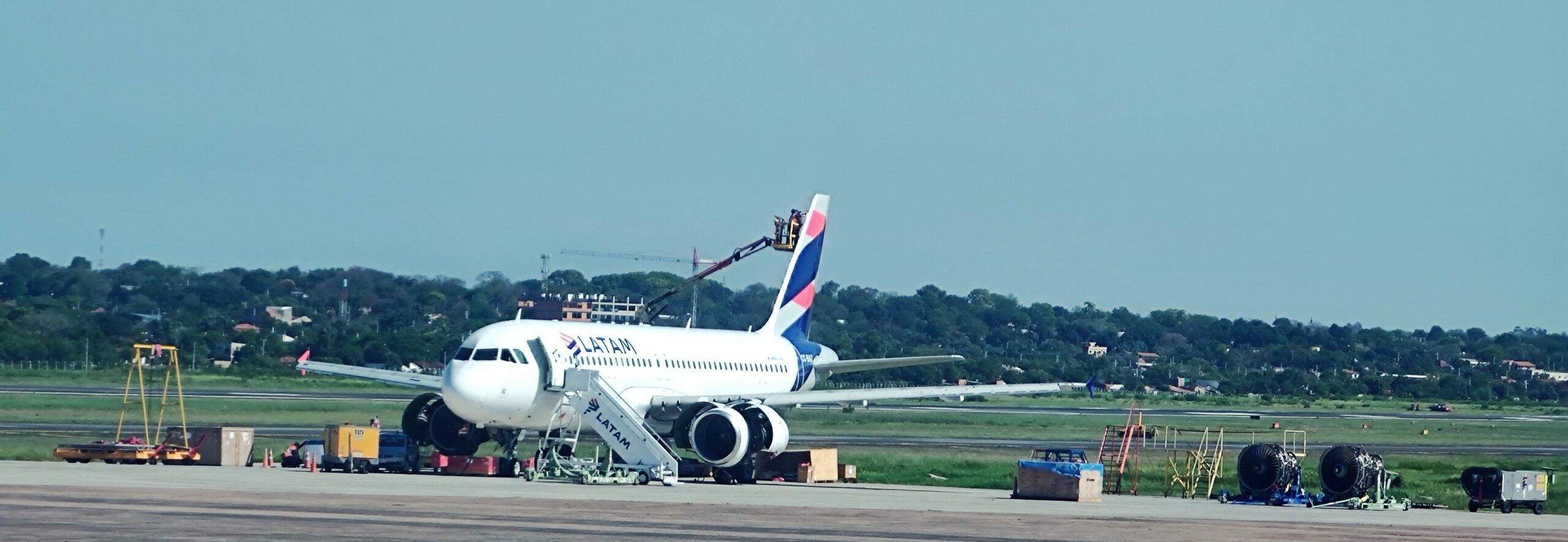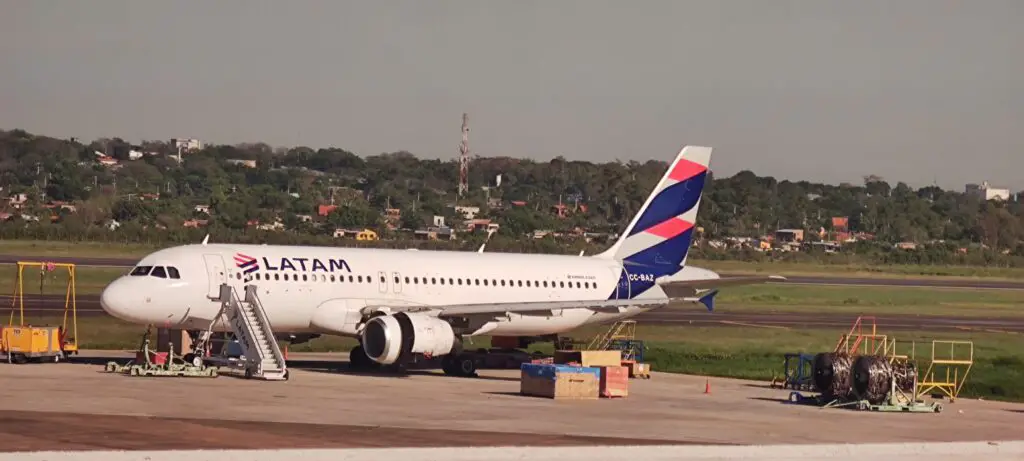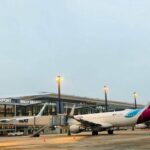The LATAM Airbus A320-200, which a few weeks ago was involved in a controversy for having crossed a storm and hail area on a flight between Foz do Iguazu and Asunción, continues to be repaired at the airport of the Paraguayan capital.
The aircraft, with registration CC-BAZ, is in the northern sector of the Silvio Pettirossi apron, and has already had its radome and windshield replaced, both heavily damaged by the hailstorm faced on the night of October 26.
The aircraft, coming from Santiago de Chile, was supposed to land at Silvio Pettirossi Airport at 18:25 local time when it had to change to the International Airport of Foz de Iguazú, Brazil, due to the strong storm that was developing at that time over a large part of the Paraguayan capital.
According to several reports, the aircraft remained for about 3 hours on Brazilian soil when the crew finally decided to continue the flight to Asunción.
During the return flight, the A320, which even had to divert to the north of Paraguay, went through a strong hailstorm that caused severe damage to the radome (fiberglass dome protecting the radar) as well as to the windshields, whose outer layers were severely damaged.
See also: LATAM Airbus A320 Incident in Paraguay- What We Know
Work in Progress

From the apron it could be observed that a technical team was checking the tail of the aircraft and that there were still tasks to be carried out on the engines, whose bays were open.
According to local sources, after the incident, a LATAM’s Boeing 767 freighter landed at the terminal carrying spare parts and tooling to complete the repairs that will allow the affected aircraft to return to active service.
To the left of the aircraft, two CFM56 engines in their containers and other boxes of work material could be seen.

According to the Paraguayan National Directorate of Civil Aviation (DINAC), the investigation of the incident is ongoing. According to international standards, a preliminary report is expected 30 days after the incident, and the investigation will conclude in a final report that may take, on average, up to two years.














